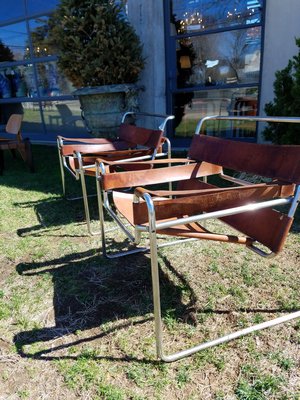

A popular pastime out here in spring and summer is checking out the yard and garage sales.
Soon we’ll be seeing the handmade signs with arrows, and columns of ads in the newspaper for yard sales, estate sales, designer yard sales and everything in between. What a fun way to spend a Saturday morning checking out what people have put out for sale. It’s kind of like buying a lottery ticket: Sometimes you’ll score, but most times you’ll just have a good time hunting.
There are several types of lookers/buyers: The “just browsing” type, the “on a mission” type, and the “looking for a bargain I can resell” type. The latter type are usually retailers, antiques dealers or decorators. This group tends to migrate to the “estate sale” while the others tend toward the everyday yard sale.
Estate sales can be good, but of course it depends on the estate. In fact, it’s amazing what is considered an estate these days. What it generally means is that someone has been hired to sell off the contents of a home due to a death or move. These sales sometimes advertise as being curated, a catch-all term that used to mean painstakingly researched and annotated but which now means the items have been decoratively placed for ease of passage through the sale area without people knocking things over. So if retailers, dealers and decorators are shopping at estate sales, should you? They might be, and certainly some like the Grey Gardens estate sale were worth the price of admission just for the curiosity value, although there was scant evidence of Edie Beale or Black Jack Bouvier in the selection for sale. After all, the Beales hadn’t lived there for years and the place had been renovated extensively by the then-current owners.
We all know from the TV show “American Pickers” that one can find interesting things by rummaging through garages, attics and basements. We all subconsciously think we’ll find the mirror frame with an original Declaration of Independence taped to the back of the mirror. And perhaps you will, and perhaps you’ll win Powerball; the odds are about the same. Bear in mind that the Pickers have a business and are out looking for things they can resell or are on a mission to find specific things for clients. This ups the game from a pastime to a pursuit and requires a knowledgeable eye and good canny aptitude. Most of us don’t have those abilities nor does the average person have a retail store to resell stuff in.
The interesting thing about retailers and dealers is that they don’t like to divulge their sources or secrets, and I could not get anyone to go on the record for this column on whether they bought items for resale at yard or estate sales. Not that I entirely blame them. What I was able to discern was a general feeling that sometimes the best things they’d found weren’t at estate sales but at the run-of-the-mill, out-of-the-way yard sale. The rationale goes something like this: “You never know.” In other words, you never know what you’ll find at either but the chances are about equal that you can find something valuable at either type of sale. Perhaps the best advice is to be well informed to start with, particularly if you’re out looking for things of value or potential value.
Here are some tips if you’re looking to flip or resell antique items from flea markets, yard/garage sales or estate sales:
1. Don’t buy broken things. It’ll cost too much to repair and might actually devalue the item.
2. Look for things that can be made into other things, i.e. candlesticks made into lamps, driftwood as a table base, old rugs into pillows.
3. Remember that you’re at someone’s house and not in the souk in Marrakesh.
4. Bear in mind that most people don’t know what they’re selling so don’t expect a historical summary.
5. Look for things that are marketable, i.e. fast sales, currently popular styles.
6. Know your client base (like the Pickers do)
7. Look for identification marks, in drawers, underneath bases, etc.
8. Bring a tape measure and magnifying glass.
9. Keep a copy of Frank Loomis’s “Antiques 101” or “Kovels’ Antiques & Collectibles” in your car.
10. Bring cash
As everyone knows mid-century modern and retro are the hot commodities in decorating right now. Think “I Love Lucy” and the Riccardos’ apartment and you have the look. Streamlined style goes back to the Art Deco period and the furnishings of the Post-War era up to and including the ’60s is what’s hot. In this period there were many American manufacturers of furniture that are noteworthy and often pop up at sales. Many others produced ceramics, clocks, lamps, etc.
Here are some of the names and places you should be looking for: furniture made in Grand Rapids, Michigan, i.e Herman Miller (furniture) and Howard Miller (clocks); George Nelson; Heywood-Wakefield; Knoll Studio and Knoll International; Charles and Ray Eames (Eames Chair); Dunbar Furniture; Thayer-Coggin; Vladimir Kagen; and Marcel Breuer, to name a few.
The one thing to be especially careful of: make sure you’re buying an antique and not a reproduction. How to tell? Usually the price, but not always, since many people don’t know whether it’s a repro or not since they themselves weren’t the buyers—it was their parents or grandparents. Like I’ve said before, if the price seems right, buy it; however, if you’re buying to resell you should know for sure whether it’s original or not. If you’re out doing yard sales have fun, who knows how many Declarations of Independence are still out there!
 More Posts from Jack Crimmins
More Posts from Jack Crimmins